|
Leadership Message
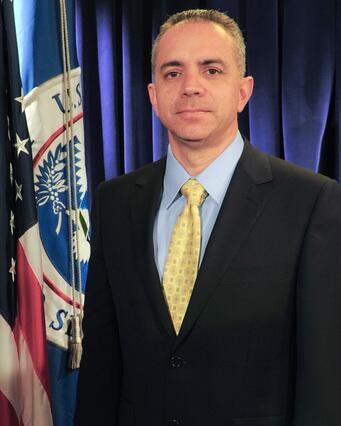
Today marks “If You See Something, Say Something®” Awareness Day. It is a good opportunity for each of us to make sure we do our part to protect our neighbors and the communities we call home by recognizing and reporting suspicious activity.
Created by the New York Metropolitan Transportation Authority and licensed by DHS in 2010, the “If You See Something, Say Something®” campaign raises public awareness of the indicators of terrorism and terrorism related crime, as well as the importance of reporting suspicious activity to state and local law enforcement.
Informed, alert communities play a critical role in keeping our nation safe. Beyond the mission we have in homeland security, I encourage each of you to do your part in hometown security by learning the indicators of terrorism and terrorism-related crime, paying attention to your surroundings, and reporting suspicious activity to local law enforcement. Today, take a few minutes to:
-
Learn the indicators of terrorism-related suspicious activity.
- Discuss the importance of recognizing and reporting suspicious activity with your colleagues, friends, and family. To facilitate these conversations, we encourage you to review campaign resources such as information on what is suspicious activity.
-
Test your awareness by taking The Challenge and encourage your friends to do the same.
I encourage you to check out additional resources found on the Awareness Day website and share these resources with your family, friends and neighbors.
Michael Apodaca
Chief Security Officer
Office of the Chief Security Officer
|
Program News
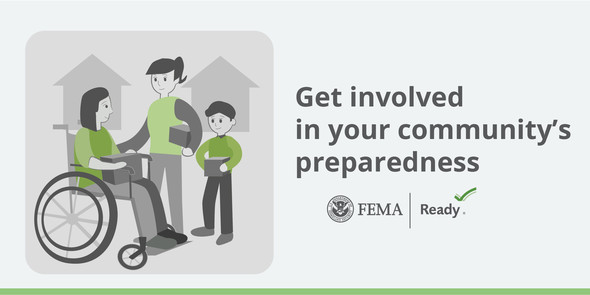 The final week of National Preparedness Month highlights the importance of helping your community plan for and recover after a disaster. Reaching out to people who live in your neighborhood can improve communication, preparedness, and recovery efforts. Neighbors are often immediate support following a disaster.
Here are some ways to get involved in your community:
-
Learn a life-saving skill and know what to do when someone is hurt by taking a CPR and first aid class.
- Learn what to do in emergency situations before professional help arrives by reading “You Are the Help Until Help Arrives.” Taking these basic actions can help you to help yourself and your neighbors during a disaster.
- Every community has voluntary organizations that work before, during and after disasters – visit National Voluntary Organizations Active in Disaster and learn how you can get involved with organizations that are active in your community.
- Find a local Community Emergency Response Team (CERT) program and train to help your community in disasters. CERT provides training in response skills such as fire safety, light search and rescue, and basic disaster medical operations.
Learn more about the many ways that you can prepare in the case of a disaster or emergency by visiting Ready.gov.
This September, FEMA released the results from the 2018 National Household Survey findings on individual attitudes and behaviors about preparedness and influences on preparing for potential hazards. Every year, FEMA surveys the American public to assess how the culture of personal disaster preparedness and resilience has changed over time.
According to the survey results, a higher percentage of American families are aware of the importance of preparing for emergencies and are actively preparing for disasters.
-
57% have taken three or more basic actions to prepare, which is 11% higher than in 2017.
-
94 % have taken at least one action to prepare.
-
67% of adults have set aside some money for an emergency, although most have set aside less than $500.
Residents in areas at risk for hurricanes are more likely to have taken preparedness actions.
Approximately 5,000 adults in the U.S. were surveyed in both English and Spanish. The survey includes a nationally representative sample and hazard-specific oversamples including tornadoes, floods, hurricanes, wildfires, earthquakes and urban events. The survey supports the goal of helping people prepare for disasters, which is a key part of the FEMA Strategic Plan.
To learn more about preparedness research and find other preparedness information, visit Ready.gov.
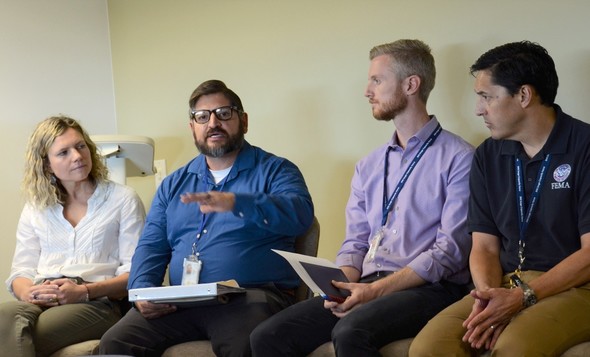 Panel members shared their professional development experiences and answered questions from attendees during RAD-X Presents: Professional Development Panel.
This month, members of FEMA Region VIII took some time to learn more about employee development opportunities available in their region during the RAD-X Presents: Professional Development Panel. RAD-X, (Readiness and Disaster Experience), is a Region VIII initiative that dedicates the fourth Thursday of each month to professional development. While this month was a more formal way to engage and educate employees on available development opportunities and encourage them to participate, RAD-X can also be initiated by individuals who wish to enhance their careers through self-paced trainings and other activities.
The panel consisted of regional staff who previously completed development programs such as leadership courses, career-broadening details, and other development opportunities. The panel shared their experiences and took questions from attendees. The well-received event was available for Region VIII employees to attend live or via video teleconference.
News You Can Use
Have you completed the mandatory Privacy at DHS: Protecting Personal Information training? All FEMA employees must complete this course to ensure they understand how to protect the personal information of survivors and fellow employees. To complete the online course, visit the FEMA Employee Knowledge Center (FEKC).
Supervisors must verify a 100% completion rate for all employees by September 30.
For more information on protecting personal information, visit FEMA’s Privacy Branch Intranet Page. Should you have any questions about FEMA’s privacy policies, please email FEMA-Privacy@fema.dhs.gov. You may also contact the FEMA Privacy Hotline at (202) 212-5100 to learn about the laws regarding privacy safeguards.
From 2 - 4 p.m. ET on October 1, the U.S. Securities and Exchange Commission (SEC) and the Federal Retirement Thrift Investment Board are co-sponsoring an event: "Your TSP Account – What to Think About When Nearing Retirement or Considering Leaving the Government." The event is a live webcast from the SEC for anyone considering retiring or leaving federal service. The webcast is open to all federal employees.
A recorded version of the webcast will be posted online October 4.
For more information about your Thrift Savings Plan (TSP) retirement account, visit the TSP website or call the TSP ThriftLine at 877-968-3778 to speak to a TSP expert.
It can be difficult to balance responsibilities at work and home. Busy schedules and competing priorities in your life can be stressful. How can you handle the day-to-day stress you may experience?
Join the Office of the Chief Component Human Capital Officer’s Work-Life Services Branch from noon to 1 p.m. ET on October 2 for a Federal Occupational Health Employee Assistance Program “Resilience and Stress: Everyday Challenges” webinar. The webinar will examine the social and emotional components of resilience, and how the stress response affects us. The webinar will provide options for cultivating and restoring personal resilience to stress.
There are several ways to participate:
- Via teleconference: 1-800-320-4330, participant code: 023967#
- By webinar via Adobe Connect
For more information on Work-Life programs, visit the OCCHCO Work-Life Services page.
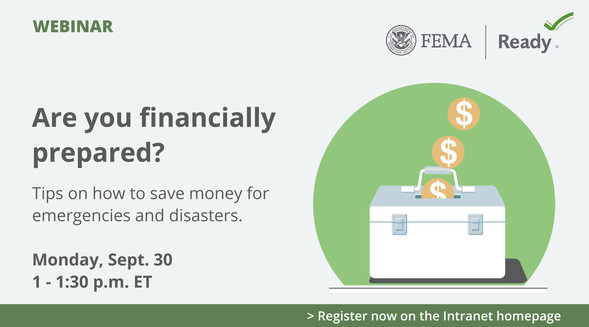 You have your emergency supplies and you know the risks in your area, but are you financially prepared for an emergency? From 1 – 1:30 p.m. ET on September 30, tune in to the free “Emergencies and Disasters: Are You Financially Prepared?” webinar to learn strategies for making sure your finances can handle an emergency.
Emergency and financial preparedness experts from FEMA’s Individual and Community Preparedness Division, the Ready Campaign, and the Federal Insurance and Mitigation Administration, will join the Federal Deposit Insurance Corporation, Money Management International, and Project Porchlight to provide financial tools and resources for individuals, families, communities and community organizations.
How to Join the Webinar:
From noon to 1 p.m. ET on October 2, join a training designed to help people learn how to de-escalate conflict through constructive conversations. This course is part of a series of events during Conflict Resolution Month in October.
To participate:
- In person: FEMA HQ, 500 C St., Room 8NW-0308 and 8SW-0715
- Via Webinar: Adobe Connect.
Employee Spotlight
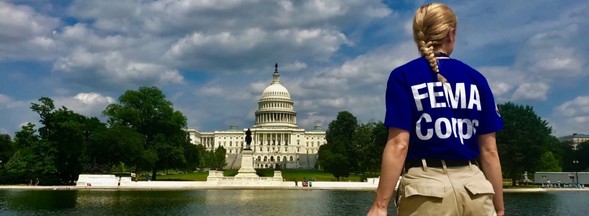 This week’s Employee Spotlight highlights the individuals that make up FEMA Corps.
Have you noticed the new faces, wearing blue shirts with an "A" on their sleeves? Those individuals are members of FEMA Corps.
FEMA Corps, part of the AmeriCorps National Civilian Community Corps (NCCC), is a full-time, team-based, residential service program that gives 18 to 24-year-old participants the opportunity to serve communities impacted by disaster while gaining work skills and experience.
FEMA Corps members live, work, and travel in dedicated teams and serve for 10 months with an option to extend for a second term. They gain training and experience while providing important support to disaster survivors and communities. They also earn a modest stipend during their service and receive an education award upon completion of the program.
After six weeks of training, teams are assigned to disaster recovery and various projects across the country. Members are required to complete 1,700 hours of service, including 10 hours of independent service projects in disaster preparation, response and recovery work such as debris removal and restoration of damaged facilities.
For more information about the program visit the national service website. To get a FEMA Corps team in your region or facility, contact fema-corps-program@fema.dhs.gov.
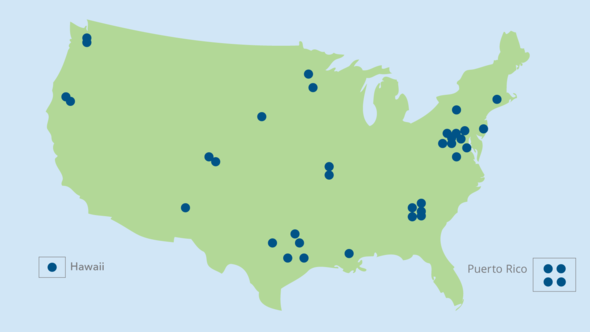 There are 42 FEMA Corps teams currently serving throughout the country. This map depicts the location of the teams.
Reservist Connection
Dear RABy is a question and answer feature the Reservist Advisory Board (RAB) will use to address questions from reservist employees. Do you have a question for the Reservist Advisory Board? Send it to FEMA-RAB@fema.dhs.gov and it may be featured in an upcoming FEMA Weekly.
·····································································································································

Dear RABy,
A previous article referenced “specialties” in our Deployment Tracking System (DTS) records. My DTS record shows nothing under specialty. What is a FEMA specialty?
|
A specialty is a specific skillset that can bring extra value to an Incident Management (IM) position. While a specialty is not necessary to fulfill an IM position, there are times when specific disasters need employees with additional skills. Specialties include skills such as fluency in a foreign language or American Sign Language, or coach-evaluator certification.
Specialties must be distinct and verifiable. They are not a requirement in the FEMA Qualification System (FQS), they simply supplement the requested position. A specialty cannot be requested without the need for a specific IM position.
Additionally, specialties:
- Are measured, documented or credentialed skills
- Are generally program-area specific
- Must be common enough to not target a narrow group of responders for deployment
- Must not be the same as or a requirement of an FQS title
For more information about what specialties are needed or how to get specialties associated to your DTS profile, contact your cadre manager.
A cadre coordinator oversees all aspects of day-to-day cadre management including staffing, equipping, training, qualifying and performance of the cadre and its members. Visit the FEMA intranet for a list of FEMA’s cadre coordinators.
Your Professional Development
USA Jobs
Details
Rotations
Leadership Development Opportunities
Department Training Opportunities
DHS Leader Development Competency Cafés
In Memoriam
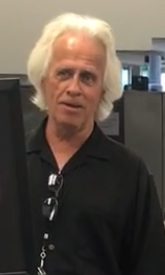
FEMA is sad to report the recent loss of David Barlow, a Public Assistance Advisor to the Water Sector Division supporting Puerto Rico’s recovery from Hurricane Maria.
David Barlow supported the water sector and Quality Assurance/Quality Control groups in many ways. He worked on very complex, high value projects related to emergency and permanent work critical to the recovery of the Puerto Rico Aqueduct and Sewer Authority.
Barlow was a meticulous project reviewer, who contributed to sampling methods which reduced time and effort during site visits. He also mentored his group by sharing his knowledge and agency experience with newer team members. Passionate about his work, Barlow always wanted what was best for the applicant. He would guide projects to ensure their success.
Staff who worked with Barlow said they will always remember his lively conversations that challenged friends and colleagues to get the best out of them.
|
Detail & Rotation Opportunities
About FEMA Weekly
The FEMA Weekly is produced by the Office of External Affairs and published each Wednesday. All FEMA employees are encouraged to submit stories, upcoming events and announcements; particularly stories about our values, guiding principles and mission in action. Please submit articles for consideration to FEMA-Employee-Communications.
> Subscribe to this newsletter
|









